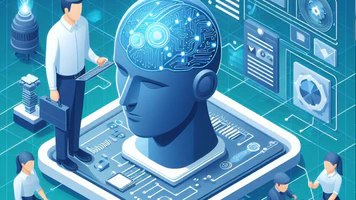
- By Justin Riddiough
- December 10, 2023
Version Control Systems
Version control is the backbone of collaborative software development, and in the realm of open-source AI, it plays a crucial role in managing code changes, tracking progress, and enabling seamless collaboration. One of the most widely used version control systems is Git.
Utilizing Systems Like Git for Code Versioning:
- Git allows teams to track changes in their source code efficiently. Learn the basics of Git, including commands for creating repositories, making commits, branching, and merging.
Collaborative Workflows:
- Explore collaborative workflows with Git, such as feature branching and pull requests. These practices streamline the integration of contributions from multiple developers.
Code Reviews:
- Leverage Git’s pull request or merge request features for code reviews. This ensures that changes are thoroughly reviewed before being merged into the main codebase.
Continuous Integration:
- Integrate Git with continuous integration (CI) tools like Jenkins or GitHub Actions. CI helps automate testing and ensures that changes don’t break existing functionality.
Reproducibility
Reproducibility is a cornerstone of reliable AI research. It ensures that experiments and results can be replicated by others, promoting transparency and reliability in the field. According to the OECD , reproducibility involves:
“The ability to re-use the same data or analysis to confirm the robustness of findings and results.”
Ensuring Reproducibility of AI Results:
Environment Setup:
- Document the software and hardware environment used for AI experiments. This includes specifying the versions of libraries, dependencies, and hardware configurations.
Containerization:
- Consider using containerization tools like Docker. Containers encapsulate the entire environment, making it easier for others to reproduce your experiments without compatibility issues.
Versioning Data:
- Apply version control principles to datasets. Use tools like DVC (Data Version Control) to track changes in datasets and ensure that data used in experiments is versioned and accessible.
Code Documentation:
- Document your code comprehensively. Explain the rationale behind design choices, algorithms used, and parameters selected. This documentation aids in understanding and reproducing the results.
Workflow Automation:
- Automate your workflow using tools like Make or workflow orchestration platforms. This ensures that the entire process, from data preprocessing to model training, is reproducible with a single command.
Note: By adopting robust version control practices and prioritizing reproducibility, open-source AI projects contribute to the reliability and credibility of research outcomes. These practices enable collaboration, facilitate peer review, and accelerate advancements in the field.


